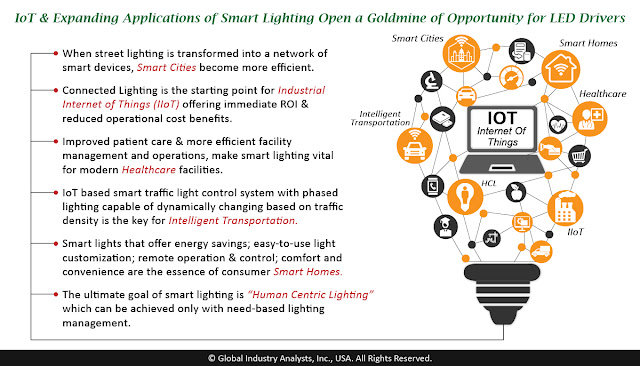The global market for LED Driver for
Lighting is projected to reach US$37.4 billion by 2025, driven by internet of
things (IoT) and expanding applications of smart lighting in smart cities, industrial
internet of things (IIoT), healthcare, intelligent transportation, and smart
homes. Smart lighting is emerging to be an integral part of smart city investments
supported by benefits and value creation such as increased energy efficiency and
low city energy budget by over 50%; sensors in smart lighting can also help provide
new capabilities such as monitoring public and traffic for safety, crime detection
and security reasons; remote lighting management and control; improve service
reliability when smart street lights are deployed via platform-as-a-service
solution; and increased citizen satisfaction. In the rapidly growing industry
4.0 space, connected lighting is the starting point for smart factories to leverage
benefits such as immediate ROI, lower operational costs, improve worker
productivity and better building management. In healthcare facilities, smart
lighting has the potential to improve patient health with new research evaluating
the impact of light’s spectral intensity on body temperature, and patient behavior.
In intelligent transportation systems,
IoT enabled smart road lighting allows for improved road safety, while smart
traffic light control system with phased lighting capable of dynamically
changing based on traffic density can enable more efficient traffic
management.
As consumer IoT gains momentum and smart
homes become more widespread, smart lights will gain in demand for energy
savings; easy-to-use light customization; remote operation and control; comfort
and convenience benefits. Read More…


My brother recommended I might like this blog. He was entirely right. This post actually made my day. You can not imagine simply how much time I had spent for this information! Thanks! Alex Shcolyar
ReplyDelete